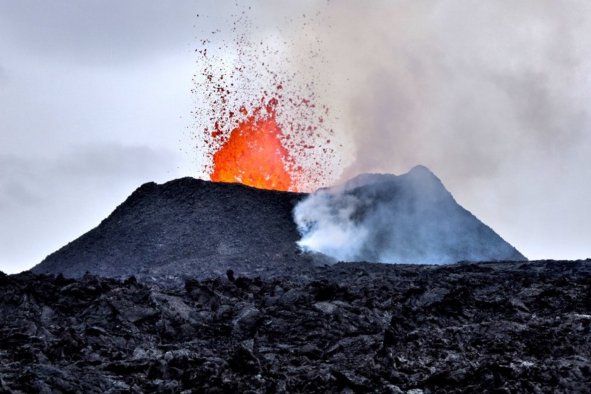Astronomers have spotted some bizarre patterns in Jupiter's atmosphere, just above its famous Great Red Spot.
The region was originally thought of as quite boring, but has now been discovered to be home to a variety of bright spots and dark-colored patterns, according to a new paper in the journal Nature Astronomy.
This discovery was made thanks to the extremely sensitive cameras of NASA's James Webb Space Telescope (JWST).
Jupiter is the largest planet in our solar system, at more than 300 times the mass of Earth. It is mostly made of hydrogen and helium, with a thick atmosphere consisting of several layers and clouds made of ammonia crystals, ammonium hydrosulfide, and water. Jupiter experiences extreme weather patterns, including powerful storms and high-speed winds reaching up to several hundreds of miles per hour. One of these storms is its famous Great Red Spot, a massive, persistent anticyclonic storm located in Jupiter's southern hemisphere.
Jupiter's upper atmosphere near the poles is host to the planet's northern and southern lights, created due to interactions with volcanic material flung out from the planet's moon Io. The structures of the upper atmosphere towards the planet's equator, however, are influenced by sunlight, and thus harder to observe. Because Jupiter receives only a small fraction of the light that we see, scientists assumed that this region would be fairly consistent and unremarkable.
"We thought this region, perhaps naively, would be really boring," paper co-author Henrik Melin, a researcher at the U.K.'s University of Leicester, said in a statement. "It is in fact just as interesting as the northern lights, if not more so. Jupiter never ceases to surprise."
The JWST was used by astronomers to study the details of Jupiter's upper atmosphere near its equator—above the Great Red Spot—due to its excellent infrared sensitivity. They discovered that, contrary to their predictions, the upper atmosphere contained a number of complex and intricate patterns.
The scientists suggest that these patterns may be driven by waves in the atmosphere of the planet, a phenomenon occasionally seen on Earth.
"One way in which you can change this structure is by gravity waves—similar to waves crashing on a beach, creating ripples in the sand," said Melin. "These waves are generated deep in the turbulent lower atmosphere, all around the Great Red Spot, and they can travel up in altitude, changing the structure and emissions of the upper atmosphere."
The researchers hope to investigate these patterns in more detail, and understand how Jupiter's upper atmosphere changes over time. They also hope that these findings will inform the upcoming ESA Jupiter Icy Moons Explorer mission, where a spacecraft named Juice will study Jupiter and its moons Ganymede, Callisto, and Europa.
Do you have a tip on a science story that Newsweek should be covering? Do you have a question about Jupiter? Let us know via science@newsweek.com.
Disclaimer: The copyright of this article belongs to the original author. Reposting this article is solely for the purpose of information dissemination and does not constitute any investment advice. If there is any infringement, please contact us immediately. We will make corrections or deletions as necessary. Thank you.



